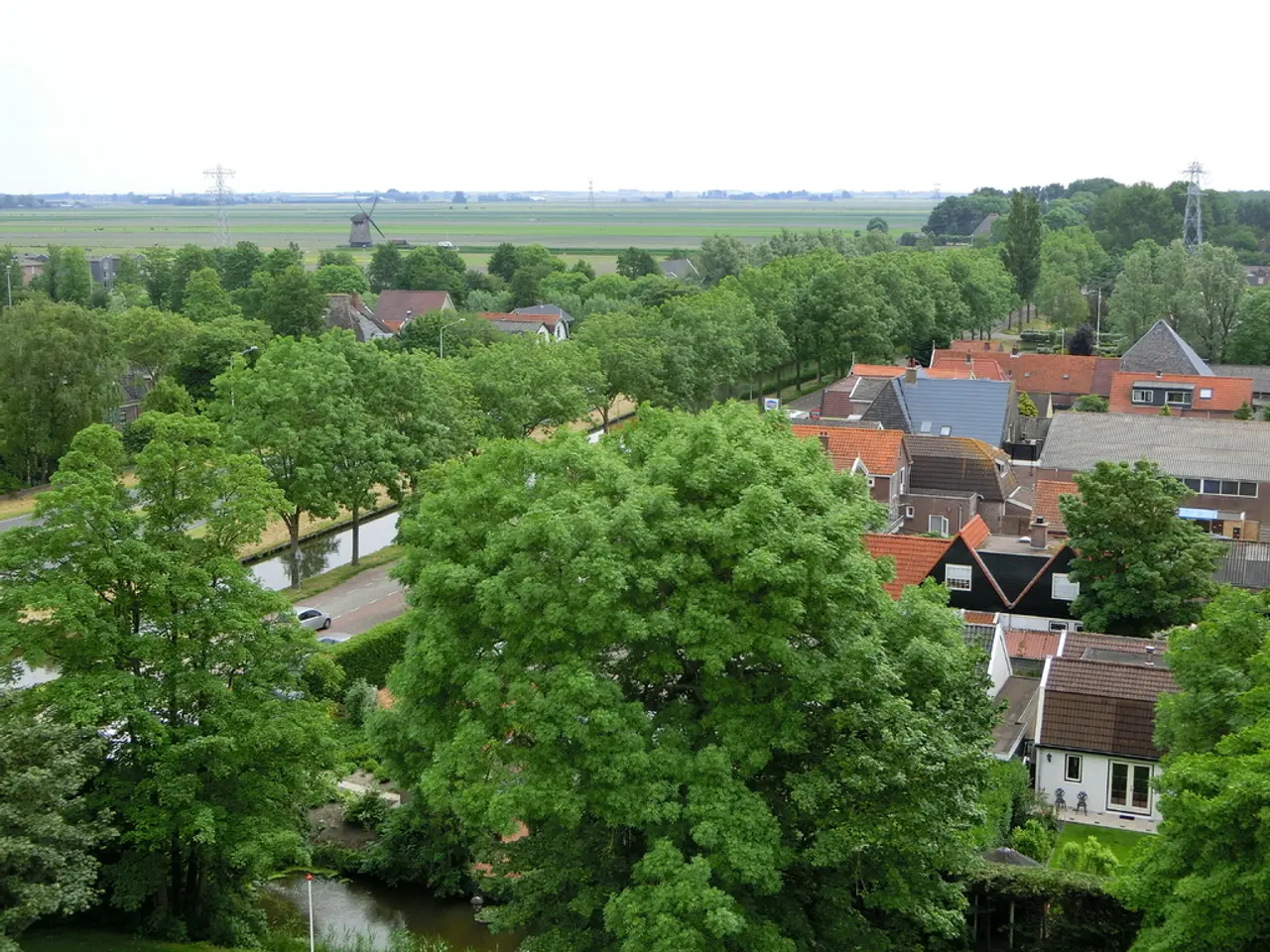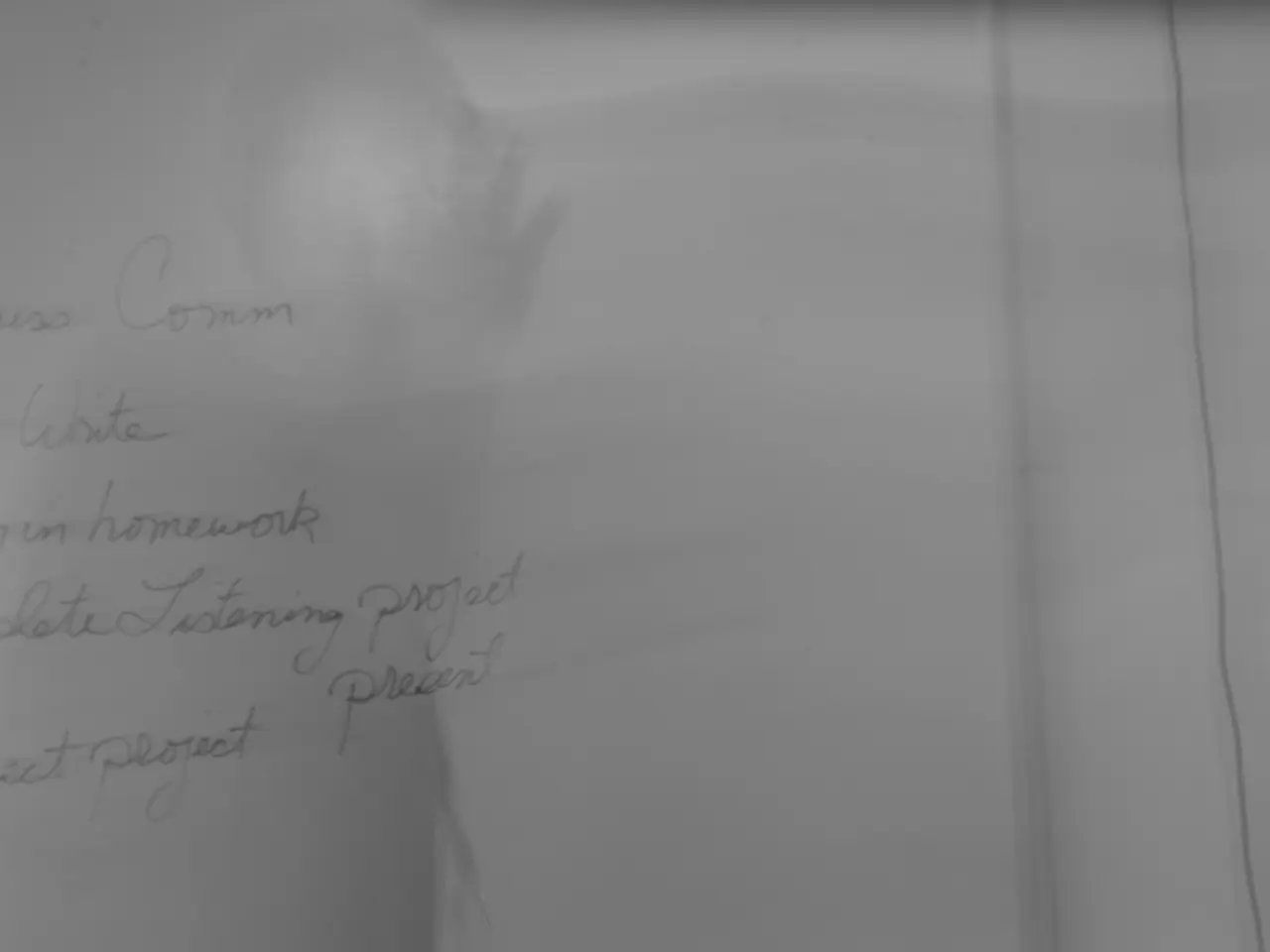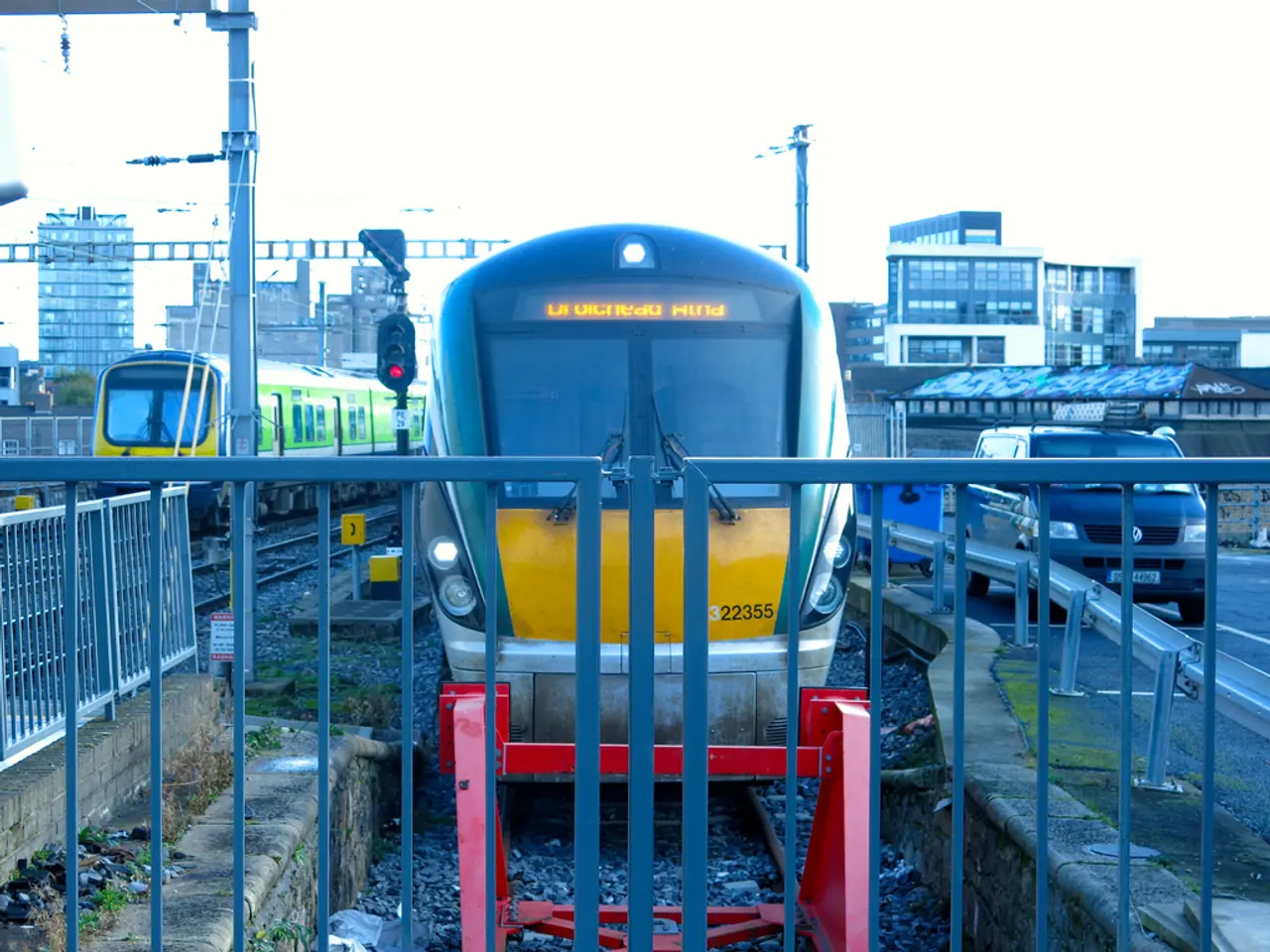City Hall Demonstration Over Wind Farm Expansion in Munich Fails to Yield Results
The Höhenkirchen-Siegertsbrunn Wind Turbine Controversy: Balancing Renewable Energy and Local Concerns
The small Bavarian town of Höhenkirchen-Siegertsbrunn has found itself at the centre of a renewable energy debate, as the local council voted in favour of a wind park, despite protests from some residents. This case highlights the typical conflicts and considerations involved in the expansion of renewable energy infrastructure, particularly in local communities.
Reasons Behind Approval
- Renewable Energy Promotion
- The project aligns with Germany’s national and regional goals to increase the share of renewable energy and combat climate change.
- Wind energy is seen as a clean, sustainable source of electricity that can reduce dependence on fossil fuels.
- Local Energy Independence
- The turbine could contribute to local energy self-sufficiency, supplying clean power to the surrounding area.
- It supports Bavaria’s energy transition (Energiewende) ambitions.
- Economic Benefits
- Potential financial incentives for the municipality through lease agreements or shareholdings.
- Local job creation during construction and maintenance.
- Increased tax revenues for the community.
- Technological and Planning Compliance
- The turbine design and placement complied with regulatory norms and environmental impact assessments.
- Authorities deemed that noise, shadow flicker, and other planned mitigation measures would keep impacts within legally acceptable limits.
Reasons Behind Opposition
- Visual and Landscape Impact
- Residents worried that the wind turbine would spoil the rural or natural landscape and reduce the aesthetic quality of the area.
- Concerns about tourism or property values decreasing due to the presence of a large industrial structure.
- Noise and Health Concerns
- Opponents feared noise pollution from turbine blades could affect quality of life.
- Some residents expressed worries about alleged health effects associated with low-frequency noise and shadow flicker.
- Wildlife and Environmental Issues
- Potential risks to birds and bats, which may collide with the turbine blades.
- Ecological impacts on habitats in the immediate area.
- Community Division
- The project caused a split between supporters who favoured renewable energy development and those prioritizing local concerns.
- Some saw the approval process as lacking sufficient community engagement or transparency.
Summary
The Höhenkirchen-Siegertsbrunn wind turbine controversy embodies the typical tensions in balancing renewable energy expansion with local environmental, aesthetic, and social concerns. While the approval was justified by climate goals, economic incentives, and regulatory compliance, opposition stemmed mainly from worries about local impacts on health, landscape, wildlife, and community cohesion.
Notably, only three council members voted against the project, paving the way for a total of five wind turbines in the Höhenkirchner Forest. However, the initial three wind turbines were stopped due to a lawsuit by wind power opponents, one of which is now abandoned due to its location in a sensitive water protection area. Councillor Roland Spingler (CSU) voted against the project, citing a shaky economic calculation and the possible settlement of a red kite in the vicinity of the planned turbines.
Councillor Rupert Franke (SPD) emphasized the urgency of climate protection and the need for action to combat climate change. He also warned that private investors could build significantly more turbines if the municipal project is not realized. Councillor Quirin Mayer (CSU) saw the wind park as inevitable, citing the phase-out of nuclear power, oil, and coal as reasons.
Councillor Gudrun Hackl-Stoll (Green faction) defended the project, stating that wind energy comes with relatively little residual risk compared to other energy forms like nuclear power. The debate underscores the importance of careful planning, open dialogue, and community engagement in addressing the challenges and opportunities of renewable energy expansion.
- The wind energy project in Höhenkirchen-Siegertsbrunn aligns with the German government's efforts to promote renewable energy and combat climate change.
- Despite the benefits of local energy independence, visual impact on the landscape, noise and health concerns, wildlife protection, and community division have led to opposition toward the wind turbine in Höhenkirchen-Siegetsbrunn.
- The wind turbine controversy emphasizes the need for careful planning, open dialogue, and community engagement to balance renewable energy expansion with local environmental, aesthetic, and social concerns.
- Councillor Roland Spingler, despite seeing economic uncertainties, voted against the wind turbine due to its possible impact on a red kite's habitat, demonstrating concerns about wildlife and environmental protection.




